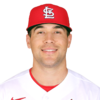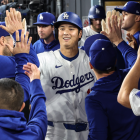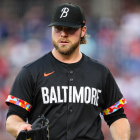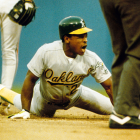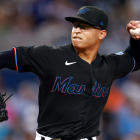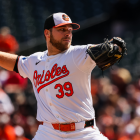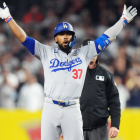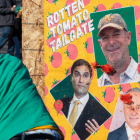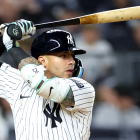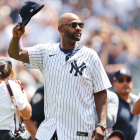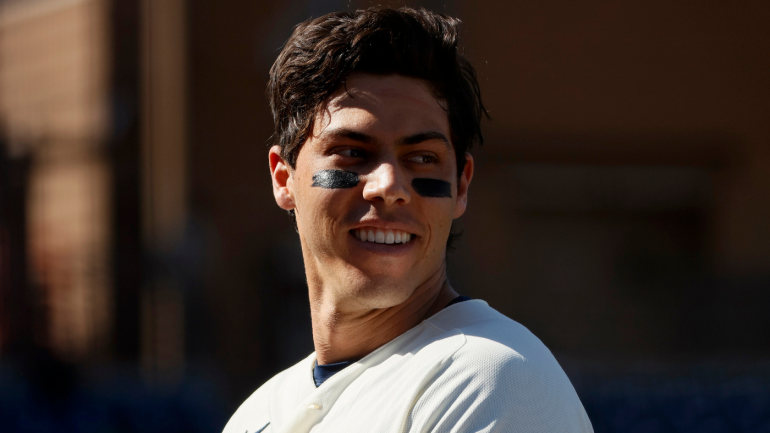
The 2021 MLB season is fast approaching, and because there will be no expanded postseason this year, playoff spots will be at a premium. Specifically, we're back to 10 playoff berths -- three division winners and two wild card entrants per league -- after having 16 last year.
Obviously, that means the margins will be tighter and the bar for contention much higher than it was in 2020. Given that we're back to a one-and-done wild card format, 2021 will also bring back those heavy incentives to win the division crown. With all that in mind, we're going to preview each division race and break down the potential X-factors between now and Opening Day. Up now is the NL Central. Here's one X-factor for each club, listed alphabetically.
Chicago Cubs: The core hitters
Last season, the Cubs claimed the NL Central title, but the offense wasn't the reason for that success. In 2021, the Cubs ranked 10th in the NL in runs scored and also 10th in OPS. While Ian Happ and Jason Heyward turned in productive campaigns, the surprise was that the Cubs' "core four" hitters -- i.e., third baseman/outfielder Kris Bryant, first baseman Anthony Rizzo, shortstop Javier Baez, and catcher Willson Contreras -- also disappointed to varying degrees.
A key for the Cubs in 2021, especially now that the once-strong rotation has been diminished in the name of payroll reduction, is whether those four hitters can bounce back. History strongly suggests that they should. Regard:
| HITTER | PRE-2020 OPS+ (PLATE APPEARANCES) | 2020 OPS+ (PLATE APPEARANCES) |
|---|---|---|
Javier Baez | 106 (2,473) | 59 (235) |
Kris Bryant | 137 (3,105) | 73 (147) |
Willson Contreras | 113 (1,664) | 106 (225) |
Anthony Rizzo | 130 (5,173) | 103 (243) |
OPS+ is the just the more familiar OPS (on-base percentage plus slugging percentage) adjusted to reflect league and home ballpark tendencies. An OPS+ of 100 represents the league average, and each point above or below that mark reflects a 1.0 percent change. For example, a hitter with an OPS+ of 120 had a park- and league-adjusted OPS that was 20 percent better than the league average, while a hitter with an OPS+ of 95 was five percent worse than the league average. So from the hitter's standpoint, the higher the OPS+ the better.
All of this tells the same story for all four hitters. All were significantly better in prior seasons, and their 2020 decline came across a vastly smaller sample and during a season played amid a global pandemic. As well, Rizzo at 31 is the oldest of the quartet, so it's highly unlikely that age-related decline is sweeping through the Cubs' lineup right now. The sensible expectation is that all four of these hitters will find their level of thereabouts in a season that figures to be something closer to normal on all fronts. That would be the Cubs' surest path to contention in what figures to be a balanced if unspectacular NL Central.
Cincinnati Reds: Tyler Mahle
Trevor Bauer's dominating absence in the Cincinnati rotation will harm their chances of returning to the postseason for a second straight year (as will the reduced playoff field, of course). But the rotation that already includes Luis Castillo and Sonny Gray could absorb the loss of Bauer a bit better if Tyler Mahle continues to develop.
The 26-year-old right-hander is coming off a 2020 season in which he put up a 3.59 ERA/133 ERA+ with 60 strikeouts in 47 2/3 innings. He also made a big leap in terms of strikeouts as a percentage of batters faced, going from 23.2 percent in 2019 to 29.9 percent last season. That latter figure puts him in elite territory and continues a pattern of growth in the vital matter of missing bats. As well, his tendency to miss bats should inoculate him to an extent against the porous Cincy defense.
Mahle's ascension has coincided with a significant increase in cutter usage, so there are pitch mix underpinnings to his success. Given a more normal routine and longer schedule in 2021, he may be able to make additional strides. If the Reds are going to withstand the loss of the 2020 NL Cy Young winner to free agency, then they'll need Mahle to do just that.
Milwaukee Brewers: Christian Yelich
If the Brewers are to make the postseason for a fourth straight year, then they'll likely need Christian Yelich to hit like he did in 2018 and 2019. Over those years, Yelich batted .327/.415/.631 while averaging 47 home runs per 162 games played. For his troubles, he won the NL MVP award in 2018 and finished runner-up in 2019. Last season, however, Yelich backslid to a line of .205/.356/.430.
The good news for Yelich and the Crew moving forward is that we have plenty of cause to dismiss those numbers. You can see right away that Yelich's struggles -- struggles in a relative sense, given that he was still a useful player in 2020 -- are driven by a low batting average. That low batting average in turn was driven by a low batting average on balls in play (BABIP). For hitters, when BABIP departs drastically from established norms, simple bad luck is typically the culprit. In Yelich's case, his 2020 BABIP was more than 100 points lower than his pre-2020 career BABIP. That screams bad luck thanks in part to the small data sample involved.
Also backing up the bad luck narrative is that Yelich hit the ball hard last season. He ranked in the 99th percentile of MLB in average exit velocity off the bat, the highest mark of his career. And he ranked in the 98th percentile in hard-hit rate, the second-highest mark of his career. Maybe it turns out that Yelich's 2018-19 is his peak never to be quite reached again. However, it says here that in 2021 he'll at least come closer to that than he will the (again, relative) depths of 2020.
Pittsburgh Pirates: More selling?
This offseason, the Pirates traded away slugging first baseman Josh Bell and right-handed starters Joe Musgrove, and Jameson Taillon. Those are three core contributors stripped from a team that last registered a paltry .317 win percentage. Across a 162-game schedule that would translate to a 111-loss season.
Given those subtractions, the 2021 Pirates -- no exaggeration forthcoming -- could be one of the worst teams in modern baseball history. Maybe, though, they're not through actively making themselves worse. The Pirates right now are running a pathetically low payroll of around $40 million, but they still have some ways to trim that figure down.
They could do that by dealing away outfielder Gregory Polanco, infielder Adam Frazier, (corner) infielder Colin Moran, right-handed starter Chad Kuhl, catcher Jacob Stallings, and closer Richard Rodriguez. Of those names, only Rodriguez figures to fetch the Pirates a strong return. Pittsburgh has already put together a strong farm system, but any deals prior to the trade deadline probably won't move the needle much. Such deals could, however, strengthen the Pirates' already strong chances of landing the top overall pick in 2022. Get inspired, Bucs fans.
St. Louis Cardinals: Dylan Carlson
Even after the offseason addition of Nolan Arenado, the Cardinals don't project to be a strong offensive team. What could change that expectation is if erstwhile top prospect Dylan Carlson takes the next step. There's cause to think he might do so.
While he struggled to start his big-league career in 2020 and had disappointing numbers overall, Carlson improved as the season wore on. As well, early after his call-up he was victimized by a run of bad luck on batted balls and probably deserved better results. Carlson was eventually demoted to the alternate training site but returned to St. Louis for the latter half of September. Combine his regular season numbers after that his return with his performance against the Padres in the NLDS, and Carlson had a line of .289/.389/.578 over his last 54 plate appearances. That's a minuscule sample size, but it's enough to somewhat balance out his struggles earlier in 2020. He's backed up those strides with strong underlying batted-ball indicators. Let's also not forget that Carlson was a 21-year-old getting his first ever exposure to the best pitching in the world and doing so without the benefit of a normal ramp-up to the season.
Also important is that Carlson has the pedigree as a former first-rounder who coming into 2020 was regarded as a top-10 prospect by many observers. He has All-Star upside, and he could realize that upside as early as 2021.
The Cardinals need that, or something close to it, to happen. It's perhaps especially important now that Kolten Wong and Dexter Fowler are elsewhere and Matt Carpenter doesn't have a clear path to regular playing time. That leaves just two lineup primaries who don't bat right-handed -- Tommy Edman and Carlson, who are both switch-hitters. Edman, though, is much stronger from the right side, while Carlson has been significantly better batting lefty. The Cardinals badly need the balance a productive Carlson would provide.










